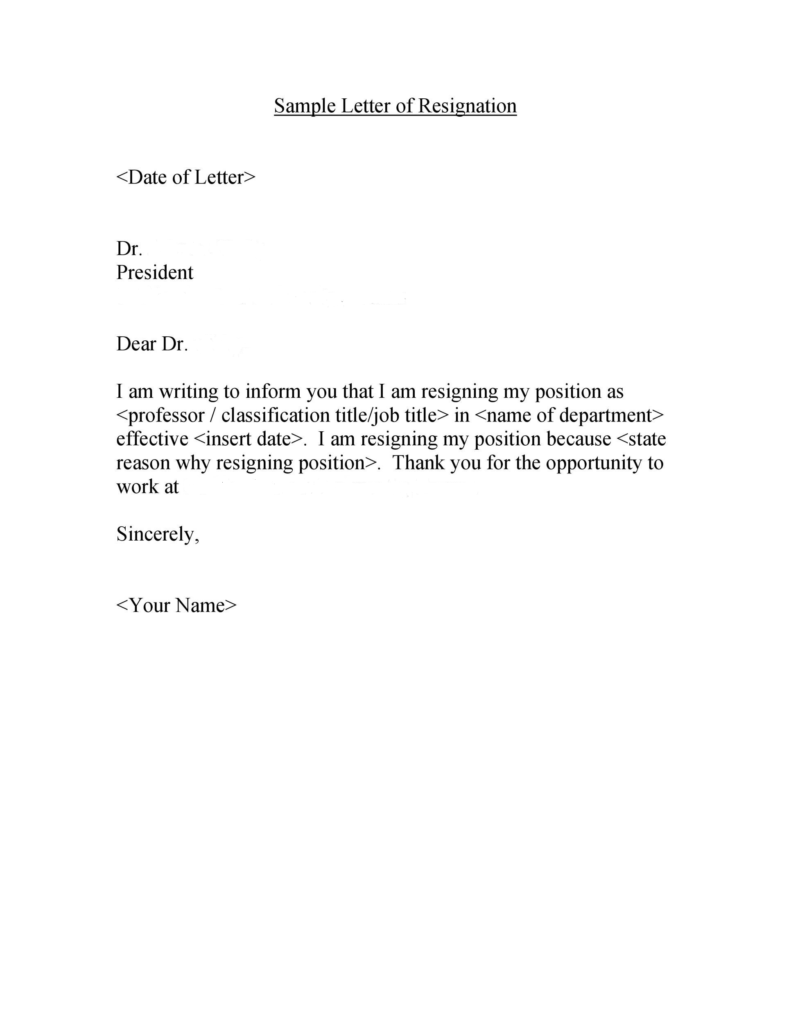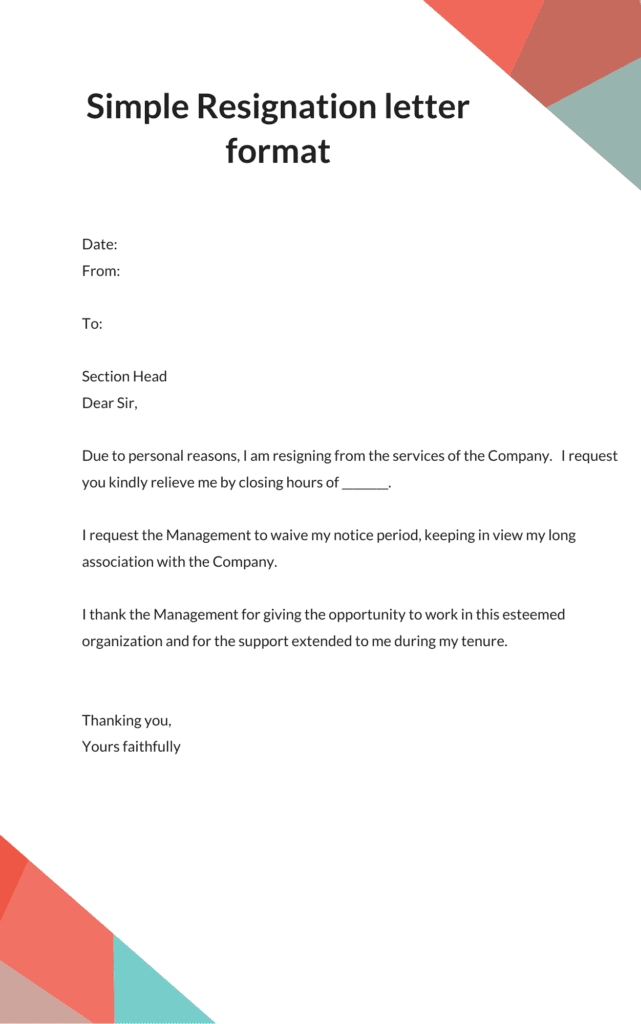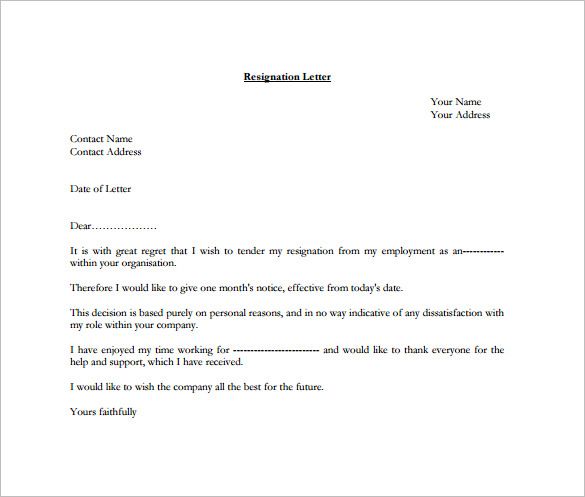Introduction
Resigning from a job can be a tough decision. It can be even tougher to express that decision to your employer in writing. Writing a resignation letter may seem like a daunting task, but it doesn’t have to be. A resignation letter is an official document that is required to inform your employer of your decision to leave the company. It should be well-written, concise, and professional. In this blog post, we will discuss everything you need to know about the resignation letter format.

Check Resignation Letter Format Online
Before we dive into the details, let’s talk about the importance of checking the resignation letter format online. There are various templates available online that can help you create a resignation letter that is professional and polished. These templates are a great starting point, but keep in mind that they should be customized to reflect your personal situation.
How to Create Resignation Letter
When creating a resignation letter, there are several points to keep in mind.
1. Be Clear and Concise
The resignation letter should clearly state that you are resigning from your position. Make sure to include the date of your resignation and the reason for your departure (optional). Keep your letter concise and to the point.
2. Be Professional
A resignation letter is an official document, so it should be written in a professional tone. Avoid being negative or critical about the company or your colleagues. Thank your employer for the opportunities you were given and express gratitude for the experience gained during your tenure.
3. Provide Notice
Make sure to provide adequate notice to your employer. The standard notice period is two weeks, but this can vary depending on your employment contract. It is important to check your contract or with HR to ensure you are providing the required notice.
4. Follow Up
After submitting your resignation letter, follow up with your employer to ensure they received it. This will help to avoid any miscommunication or misunderstandings.
Points to Remember
When creating your resignation letter, keep these points in mind:
- Be clear and concise
- Be professional
- Provide notice
- Follow up

How to Submit Resignation Letter
Now that you have created your resignation letter, it’s time to submit it to your employer. Here are the steps to follow:
1. Schedule a Meeting with Your Employer
Schedule a meeting with your employer to discuss your resignation. This meeting can be in person or over the phone, depending on your preference.
2. Submit Your Resignation Letter
During the meeting, hand over your resignation letter to your employer. Make sure to thank them for the opportunities given to you and express your willingness to help with the transition.
3. Discuss Transition
During the meeting, discuss the transition process with your employer. Offer to help train your replacement or to tie up any loose ends before you leave.
4. Ask for a Reference
If you had a positive experience with your employer, it is appropriate to ask for a reference letter. This can be a valuable asset when job hunting in the future.
FAQs
Q1. Can I resign via email?
A1. It is generally recommended to resign in person or over the phone, followed up by a written resignation letter. However, if resigning in person or over the phone is not possible, then an email resignation letter may be accepted. Make sure to follow the same guidelines for professionalism and clarity as you would for a written letter.
Q2. Do I need to give a reason for my resignation?
A2. You do not need to provide a reason for your resignation, but it can be helpful to explain your decision if you have a good relationship with your employer.
Q3. How much notice should I provide?
A3. The standard notice period is two weeks, but this can vary depending on your employment contract. Check your contract or with HR to ensure you are providing the required notice.
Q4. Can I retract my resignation?
A4. It depends on the situation and the employer’s policies. If you have not yet signed a termination agreement, it may be possible to retract your resignation. However, if you have already signed the agreement, it may be too late to change your mind.
Q5. What happens after resignation?
A5. The employer company go through the resignation letter. In case the employee is valuable to the company then the company may try to negotiate, understand the reason for resignation and resolve the issue to retain the employee. If the employer thinks that the employee should be relieved from the duty then the employer will issue relieving letter to the employee. The employer may also conduct an exit interview in this regard.

Conclusion
Writing a resignation letter can be a difficult task, but it is an essential part of leaving a job. By following the guidelines outlined in this blog post, you can create a resignation letter that is professional, clear, and effective. Remember to be concise and professional, provide adequate notice, and follow up with your employer. And don’t forget to check the resignation letter format online for templates and examples to guide you. Good luck with your next chapter!
Practice area's of B K Goyal & Co
Income Tax Return Filing | Income Tax Appeal | Income Tax Notice | GST Registration | GST Return Filing | FSSAI Registration | Company Registration | Company Audit | Company Annual Compliance | Income Tax Audit | Nidhi Company Registration| LLP Registration | Accounting in India | NGO Registration | NGO Audit | ESG | BRSR | Private Security Agency | Udyam Registration | Trademark Registration | Copyright Registration | Patent Registration | Import Export Code | Forensic Accounting and Fraud Detection | Section 8 Company | Foreign Company | 80G and 12A Certificate | FCRA Registration |DGGI Cases | Scrutiny Cases | Income Escapement Cases | Search & Seizure | CIT Appeal | ITAT Appeal | Auditors | Internal Audit | Financial Audit | Process Audit | IEC Code | CA Certification | Income Tax Penalty Notice u/s 271(1)(c) | Income Tax Notice u/s 142(1) | Income Tax Notice u/s 144 |Income Tax Notice u/s 148 | Income Tax Demand Notice
Company Registration Services in major cities of India
Our Offices
